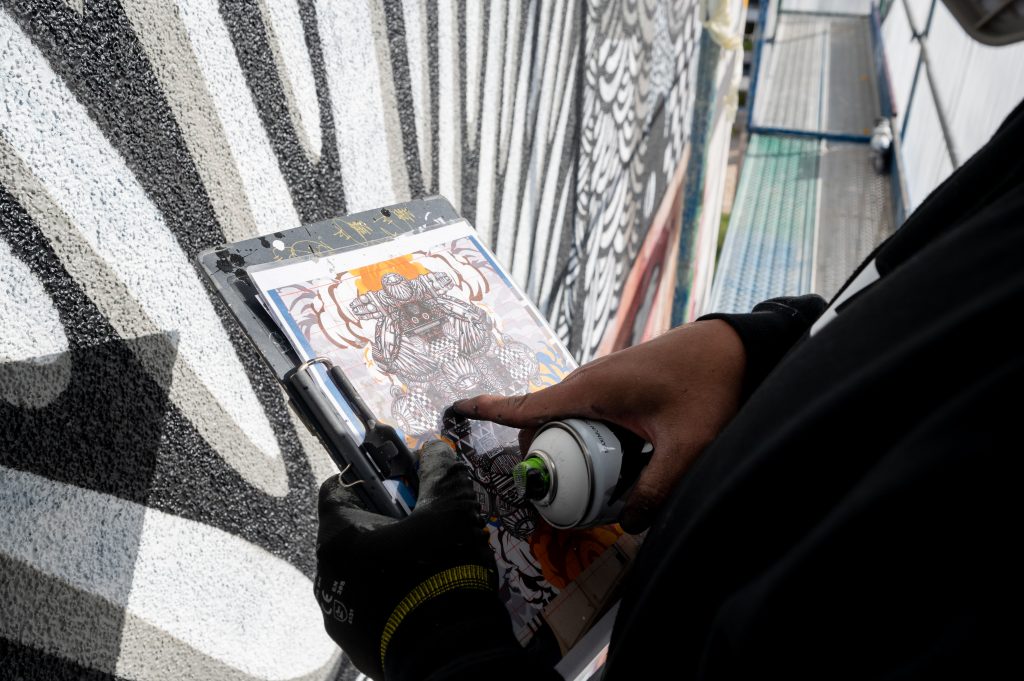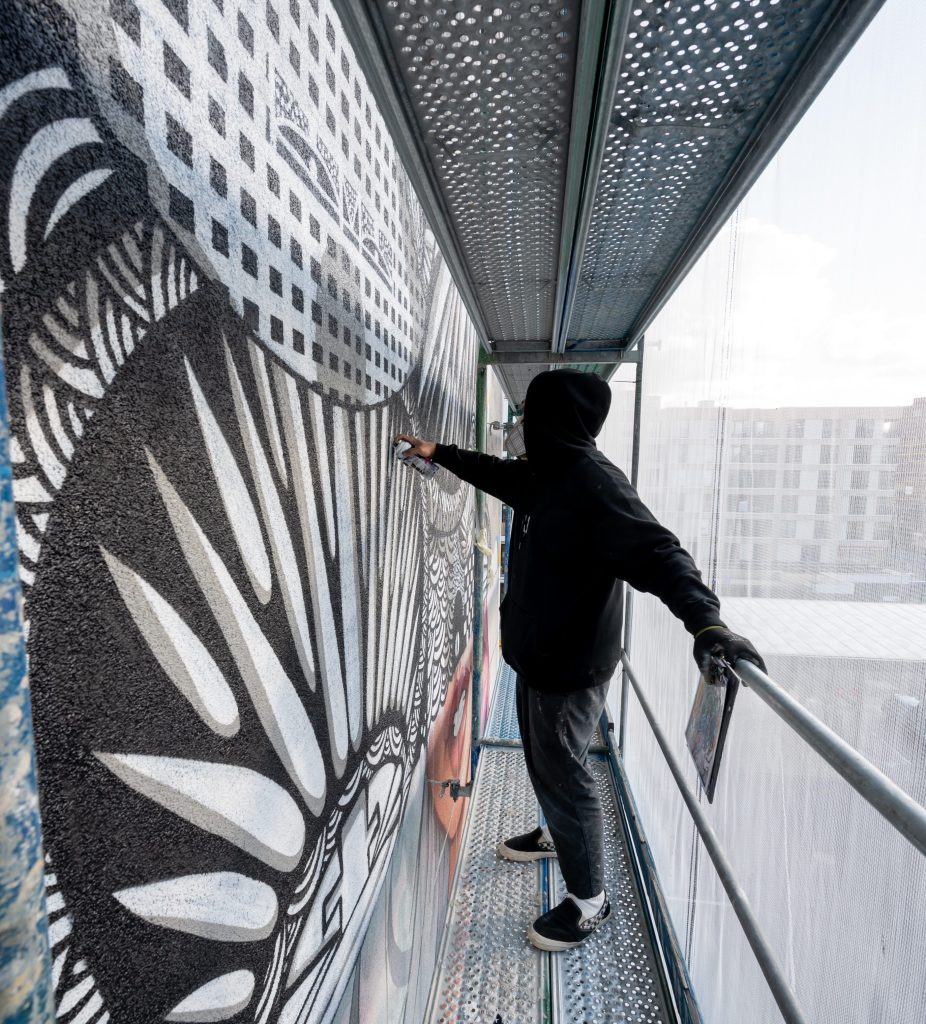"I see only diversity."
To mark the 25th anniversary of the city partnership between Berlin and Jakarta, the two street artists Darbotz (Jakarta) and Snyder (Berlin) created a 120-square-metre mural in Jakarta in 2019. This project is now continuing with the creation of individual works by the artists on Europacity's Heidestrasse in a collaboration between the Europacity Property Development Association and the Senate Chancellery of the Governing Mayor of Berlin, underlining the importance of Europacity as a new place for international cooperation. In a joint interview, Darbotz and SNYDER talk about the fundamental aspects of their art.
How old are you both, and where did you grow up?
Darbotz: I am 40 years old and grew up in Jakarta, Indonesia.
Snyder: I grew up in Berlin, and I'm also 40 years old.
How long have you both been working as artists?
Darbotz: Not too long, only about 20 years.
Snyder: I've been making art all my life. But I've only been working as an independent artist for about three years.
Did you know each other before the Berlin-Jakarta city partnership project?
Snyder: No, I first met Darbotz in Jakarta in 2019 when we created the large mural in the city centre for this project. However, since then, we have often exchanged artistic ideas. A recent result of this is a joint screen-printing project that we completed together. Now we look forward to continuing our collaboration here in Berlin.
You both use aliases when you work. What do they mean? And how did you come by these pseudonyms?
Darbotz: I think every street artist needs a pseudonym, and mine is a nickname a friend gave me in lower secondary school.
Snyder: I gave myself this alias as a graffiti artist back in the nineties, and I have never wanted to change it.
What materials and techniques do you use?
Snyder: I have been using spray cans since I was 13 years old. Graffiti was an important part of my youth and also influenced my artistic development. I still work like this today for large-format images, but sometimes I will swap the spray can for a brush for small studio works.
Darbotz: I also use spray paint for most of my graffiti art.

Darbotz, your artwork is mainly black and white. Is there a particular reason for this? And what is the idea behind the squid monster?
Darbotz: With so many bright colours already in the street, I want to stand out from that. With black and white, you can neutralise what's around you. The squid monster is actually me, my alter ego, and I illustrate how I became that monster, living in a big city, dealing with its inherent issues.
Snyder, how about you? Does your work have a characteristic feature?
Snyder: Yes, my alienating style and use of blue and brown/orange colours with black and white would be my trademark style.
What are the ideas behind your artworks in Europacity?
Darbotz: When we talk about Jakarta and Berlin, I see only diversity, and I think this diversity characterises every great city in the world. So, I designed a totem that includes many faces and images representing different human characteristics, merging into one giant monster. Because that's what they are.
Snyder: Our work references what it means to live in a city, and my painting is a postcard from a time when the EasyJet-set began taking off for weekend sightseeing trips. But then, the pandemic put an end to that, which means that cultural life now has to reorganise itself on all levels.
Where does your inspiration come from? Are there other artists who inspire you?
Snyder: I take inspiration from the animal kingdom and the many new things we can learn from our fellow inhabitants on this planet.
Darbotz: My day-to-day life in a big city inspires my work—in all its elements—the people and my urban surroundings. I love the artistic duo Os Gêmeos from Brazil mainly because they have made graffiti art on the street and brought it into galleries, advertising, and museums.
Does your art have a message?
Snyder: I'm happy if my graffiti can raise awareness about how remarkable the animal world is and show people there's still much more we can learn about it.
Darbotz: My work has no particular message; it's a reflection of my daily struggle with myself — something many people can relate to in their own lives.
Darbotz, can you describe your art in three words?
Darbotz: A beautiful mess.
How does it feel to have your work presented in the German capital?
Darbotz: It feels great because I have never been to Germany before and because I'm on a mission to create more artwork outside Indonesia. I want Indonesian street art to be known the world over! But unfortunately, because of the pandemic, realising this has become a lot more complicated.
Nonetheless, your art has now reached Berlin! Thank you both for the interview.
